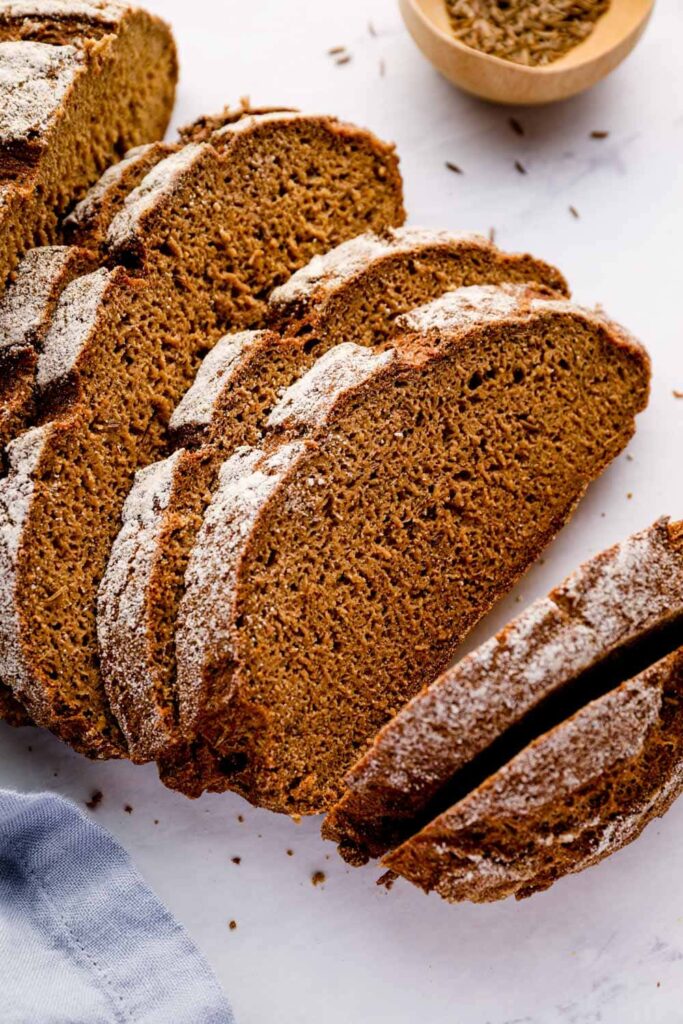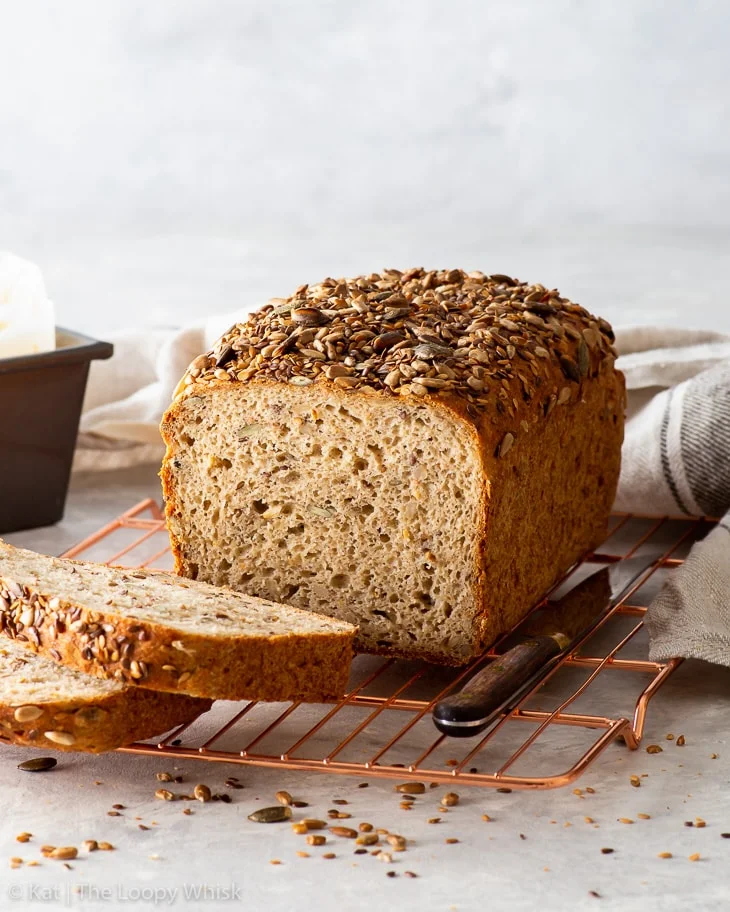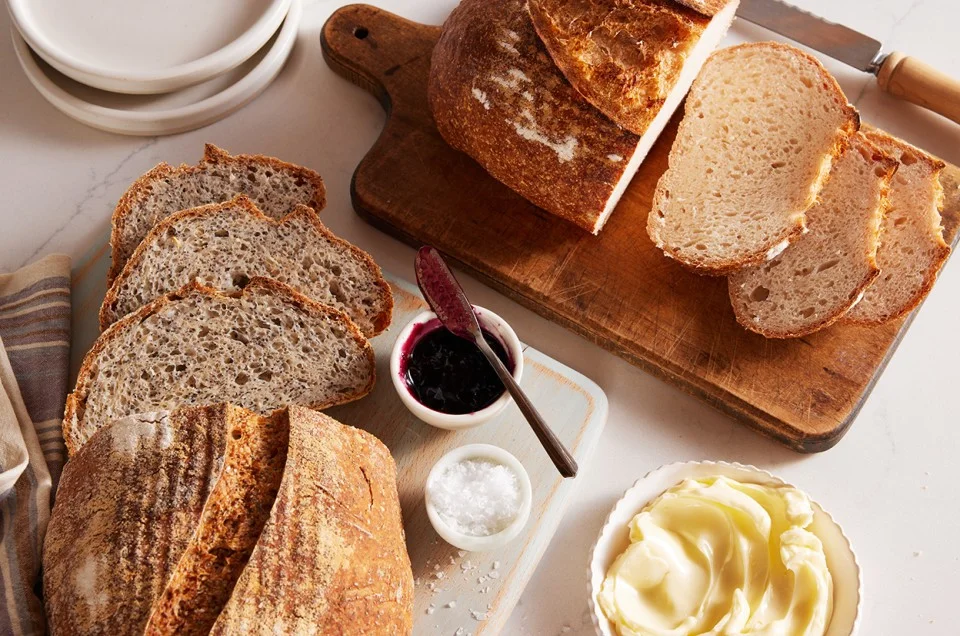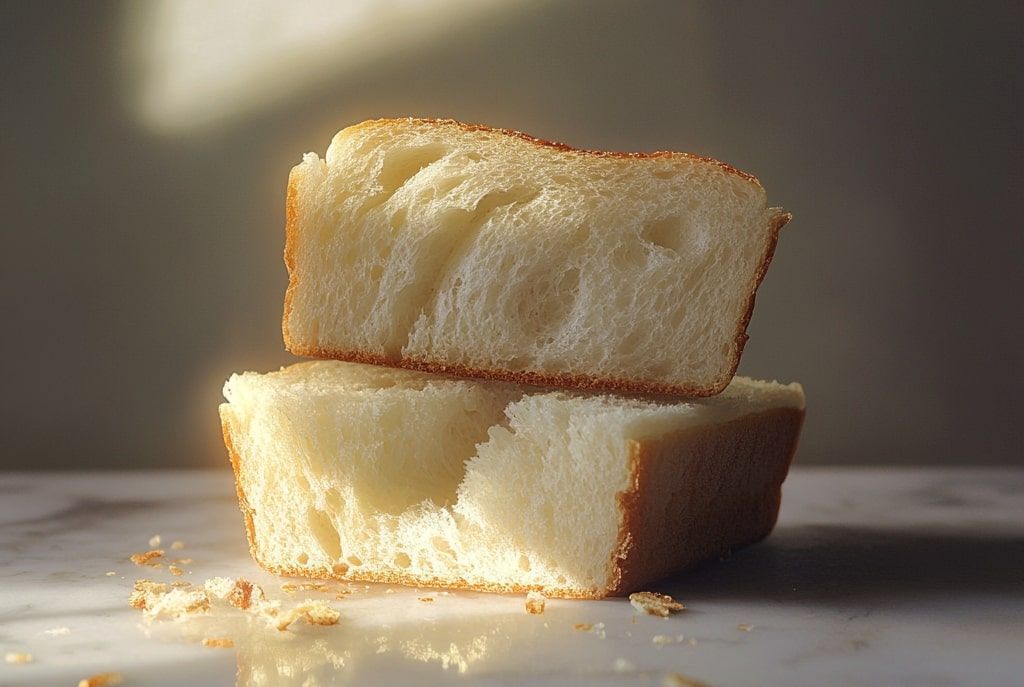As gluten-free diets gain traction in 2025, driven by celiac disease, gluten sensitivity, and wellness trends, the demand for tasty, affordable bread alternatives has soared. Approximately 1% of the global population has celiac disease, and 6% report non-celiac gluten sensitivity (Celiac Disease Foundation, 2025). Meanwhile, store-bought gluten-free bread often disappoints with high costs—averaging $7 per loaf—and subpar texture or flavor (Gluten-Free Living, 2025). Homemade gluten-free bread alternatives offer a budget-friendly, customizable solution. This article presents five detailed recipes for gluten-free breads, their nutritional benefits, cost savings, and practical tips to overcome common challenges. These recipes cater to diverse dietary needs, from vegan to low-carb, ensuring everyone can enjoy fresh, wholesome bread at home.
Why Gluten-Free Bread Alternatives?
Gluten-free bread alternatives are essential for those avoiding gluten due to medical necessity or preference. Celiac disease requires strict gluten avoidance to prevent intestinal damage, while gluten sensitivity causes discomfort like bloating or fatigue. Beyond health, 15% of consumers choose gluten-free for perceived digestive benefits (Mintel, 2025). Homemade options save 50-70% compared to commercial loaves, which often contain additives like xanthan gum, linked to digestive issues in 10% of users (Healthline, 2025). By using alternative flours—almond, coconut, chickpea, or buckwheat—home bakers can control ingredients, enhance nutrition, and experiment with flavors.
Five Gluten-Free Bread Recipes
Below are five versatile recipes, each designed for ease, affordability, and delicious results. They range from sandwich loaves to flatbreads, accommodating various tastes and dietary restrictions.
1. Almond Flour Sandwich Bread
This protein-packed loaf is soft, slightly nutty, and ideal for sandwiches or toast. It’s low-carb and keto-friendly, perfect for health-conscious bakers.
- Ingredients (1 loaf, 12 slices): 2 cups almond flour ($3), 4 large eggs ($1), ¼ cup melted coconut oil ($0.50), 1 tsp baking powder ($0.10), ½ tsp salt ($0.05), 2 tbsp psyllium husk ($0.50), ¼ cup warm water ($0).
- Instructions: Preheat oven to 350°F (175°C). In a large bowl, mix almond flour, baking powder, salt, and psyllium husk. In another bowl, whisk eggs, coconut oil, and water. Combine wet and dry ingredients, stirring until a thick batter forms. Pour into a greased 8×4-inch loaf pan. Bake for 30-35 minutes until golden and a toothpick comes out clean. Cool for 20 minutes before slicing.
- Nutritional Benefits: High in protein (7g/slice), fiber (3g/slice), and healthy fats. Low glycemic index, suitable for diabetes management.
- Cost: ~$5 per loaf vs. $8 store-bought. Saves $36 annually with weekly baking.
- Tips: Store in the fridge for up to 5 days or freeze slices for 3 months. Add chia seeds for extra crunch.

2. Coconut Flour Flatbread
This quick, dairy-free flatbread is perfect for wraps, pizza bases, or dipping. Its slight sweetness complements savory fillings.
- Ingredients (6 flatbreads): ½ cup coconut flour ($0.50), 2 tbsp flaxseed meal ($0.30), 1 cup water ($0), 2 eggs ($0.50), ½ tsp baking soda ($0.05), ¼ tsp salt ($0.05), 1 tbsp olive oil ($0.20).
- Instructions: Heat a non-stick skillet over medium heat. In a bowl, combine all ingredients to form a smooth batter. Let rest for 5 minutes to thicken. Grease the skillet lightly. Pour ¼ cup batter, spreading thinly into a 6-inch circle. Cook 2-3 minutes per side until golden. Repeat for remaining batter.
- Nutritional Benefits: Vegan-friendly (if egg substitute used), high in fiber (5g/flatbread), and low-calorie (80 kcal each). Supports gut health.
- Cost: ~$1.60 for 6 flatbreads vs. $5 store-bought pack. Saves $176 annually with weekly batches.
- Tips: Add cumin or garlic powder for flavor. Store in an airtight container for 3 days or freeze for 2 months.
3. Chickpea Flour Socca
Socca, a Mediterranean flatbread, is naturally gluten-free, vegan, and protein-rich, ideal as a side or appetizer.
- Ingredients (1 large socca, 8 wedges): 1 cup chickpea flour ($0.75), 1 cup water ($0), 2 tbsp olive oil ($0.40), ½ tsp salt ($0.05), ¼ tsp dried rosemary ($0.10).
- Instructions: Preheat oven to 450°F (230°C). Whisk flour, water, oil, salt, and rosemary into a smooth batter. Let rest for 30 minutes. Heat a 10-inch cast-iron skillet in the oven for 10 minutes. Grease lightly, pour in batter, and bake 15-20 minutes until crispy. Cut into wedges.
- Nutritional Benefits: 10g protein per wedge, rich in iron and folate. Anti-inflammatory properties from rosemary.
- Cost: ~$1.30 vs. $4 store-bought flatbread. Saves $143 annually with weekly baking.
- Tips: Top with vegan cheese or herbs. Keeps 2 days at room temperature or refrigerate for 5 days.
4. Buckwheat Bread Rolls
These hearty rolls, made with buckwheat flour, are nut-free and great for burgers or breakfast. Buckwheat is a nutrient-dense pseudograin.
- Ingredients (8 rolls): 1.5 cups buckwheat flour ($1.50), ½ cup tapioca flour ($0.50), 1 tbsp yeast ($0.20), 1 cup warm water ($0), 1 tbsp honey ($0.25), 1 tsp salt ($0.05), 2 tbsp olive oil ($0.40).
- Instructions: Activate yeast in warm water with honey for 5 minutes. Mix flours and salt in a bowl. Add yeast mixture and oil, kneading into a dough. Let rise for 1 hour. Divide into 8 balls, place on a greased baking sheet, and let rise 30 minutes. Bake at 375°F (190°C) for 20-25 minutes.
- Nutritional Benefits: High in magnesium and antioxidants. Nut-free for allergy sufferers.
- Cost: ~$2.90 for 8 rolls vs. $6 store-bought. Saves $166 annually.
- Tips: Brush with olive oil for a glossy finish. Freeze for 3 months.
5. Quinoa Flour Tortillas
These flexible tortillas are perfect for tacos or wraps, with a mild, nutty flavor.
- Ingredients (8 tortillas): 1 cup quinoa flour ($1.20), ½ cup rice flour ($0.40), ¾ cup water ($0), 1 tbsp olive oil ($0.20), ½ tsp salt ($0.05).
- Instructions: Mix flours, salt, oil, and water into a dough. Knead for 2 minutes. Divide into 8 balls. Roll each into a 6-inch circle. Cook on a hot, dry skillet for 1-2 minutes per side. Stack under a towel to keep soft.
- Nutritional Benefits: Complete protein (4g/tortilla), gluten-free, and heart-healthy.
- Cost: ~$1.85 for 8 vs. $5 store-bought. Saves $162 annually.
- Tips: Add chili flakes for spice. Store in fridge for 5 days.
Benefits of Homemade Gluten-Free Bread
Homemade gluten-free breads offer multiple advantages:
- Cost Savings: Recipes cost $1.30-$5 per batch, saving 50-70% vs. store-bought. Annual savings range from $143-$176 with weekly baking.
- Nutritional Control: Avoid additives like xanthan gum or preservatives. Use nutrient-dense flours for protein, fiber, and vitamins.
- Customization: Adjust flavors with herbs, spices, or seeds. Cater to vegan, keto, or nut-free diets.
- Sustainability: Reduce packaging waste compared to commercial products, aligning with 2025’s eco-conscious trends (Forbes, 2025).
Overcoming Common Challenges

Gluten-free baking has unique hurdles, but these can be addressed:
- Texture Issues: Gluten-free dough lacks elasticity. Psyllium husk, flaxseed, or tapioca flour improve binding, creating a bread-like structure. For example, psyllium in almond bread mimics gluten’s stretch.
- Cost of Ingredients: Specialty flours like almond ($10/lb) are pricier than wheat ($1/lb). Opt for affordable options like chickpea ($3/lb) or buy in bulk online, saving 20% (Amazon, 2025).
- Dryness or Crumbling: Add moisture with eggs, oil, or water. Let batters rest to absorb liquid, as in socca’s 30-minute rest.
- Time Constraints: Prep takes 10-60 minutes, but batch-baking saves time. Make double batches and freeze for convenience.
- Flavor Blandness: Enhance taste with herbs (rosemary, thyme), spices (cumin, paprika), or seeds (sesame, poppy). Experiment with flour blends for depth.
Practical Tips for Success
- Equipment: Use a non-stick skillet for flatbreads, a loaf pan for breads, and parchment paper to prevent sticking. A stand mixer simplifies kneading for rolls.
- Storage: Refrigerate breads for 3-5 days or freeze for 2-3 months. Wrap tightly to retain moisture.
- Sourcing Ingredients: Shop at bulk stores or online for deals. Local co-ops offer organic flours at 15% lower prices (Whole Foods, 2025).
- Experimentation: Mix flours (e.g., quinoa and rice) for unique textures. Test small batches to perfect recipes.
- Community Engagement: Share recipes on X with #GlutenFreeBaking to connect with bakers. Join gluten-free forums for tips.
Nutritional and Lifestyle Impact
These recipes align with 2025’s health trends, emphasizing whole foods and dietary inclusivity. Almond and quinoa breads support low-carb and keto diets, while chickpea socca is vegan and protein-rich. Buckwheat rolls cater to nut allergies, and coconut flatbread is quick for busy lifestyles. Regular consumption of nutrient-dense breads can improve digestion (30% report benefits, Healthline, 2025), stabilize blood sugar, and enhance energy levels. Socially, gluten-free baking fosters community, with 25% of bakers sharing recipes online (X Trends, 2025).

Challenges in Gluten-Free Baking
Beyond texture and cost, other challenges include:
- Learning Curve: Gluten-free baking requires practice. Start with simple recipes like socca before tackling rolls.
- Availability: Specialty flours may be scarce in rural areas. Online retailers like Thrive Market deliver nationwide.
- Allergy Concerns: Almond flour excludes nut-allergic individuals. Buckwheat or chickpea flours are safer alternatives.
- Shelf Life: Gluten-free breads spoil faster without preservatives. Freeze extras immediately.
Future of Gluten-Free Baking
In 2025, gluten-free baking is evolving with new flours (teff, sorghum) and AI-driven recipe apps that tailor ingredients to dietary needs (FoodTech, 2025). The gluten-free market, valued at $7.5 billion, grows 9% annually (Grand View Research, 2025), reflecting demand for homemade solutions. Innovations like 3D-printed gluten-free dough could simplify baking by 2030, but for now, these recipes offer accessible entry points.
